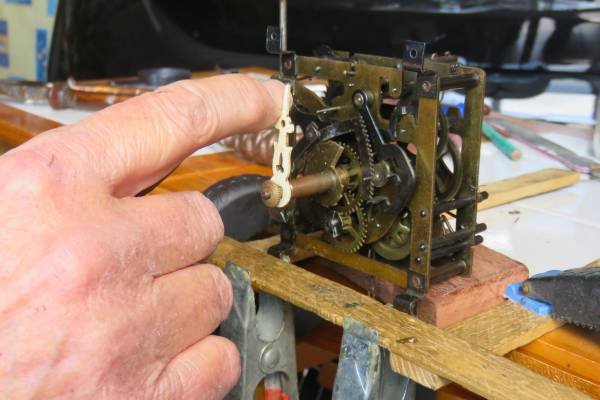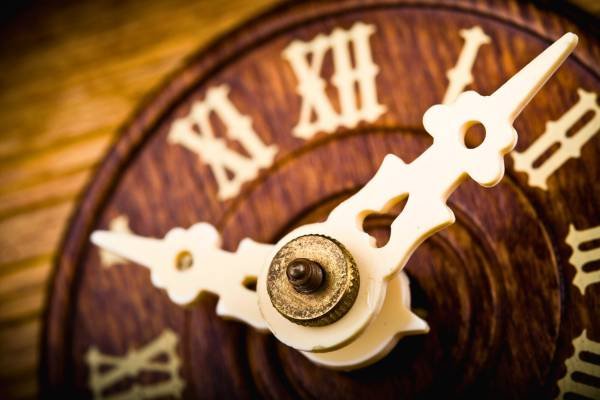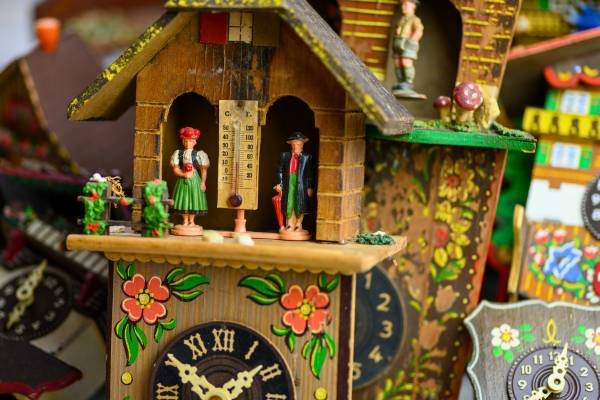Cuckoo clocks are timeless treasures that captivate with their intricate designs and charming sounds. But have you ever wondered, “How Do Cuckoo Clocks Work?” In this article, we’ll explore the fascinating mechanics behind these iconic timepieces. From the precise movements of the pendulum to the enchanting call of the cuckoo bird, every detail is a testament to master craftsmanship. Whether you’re a clock enthusiast or just curious, understanding how cuckoo clocks operate will deepen your appreciation for these enduring pieces of art and history.
A Step-by-Step Process: How Do Cuckoo Clocks Work?
- Winding the Clock: Pull the chains to raise the weights, which power the clock’s movement and cuckoo mechanism.
- The Pendulum’s Role: The pendulum swings back and forth, regulating the clock’s timing and ensuring consistent movement.
- Gear Movement: Gears within the clock turn in sync, advancing the hands on the clock face.
- Activating the Cuckoo Call: At each hour, a cam triggers the bellows, producing the iconic cuckoo sound.
- Cuckoo Bird Animation: Simultaneously, the cuckoo bird emerges from its door, synchronized with the sound.
- Weights Control: As time passes, the weights slowly descend, driving the clock’s mechanisms.
- Repeating the Cycle: The process repeats each hour, with regular winding needed to maintain accurate timekeeping.
The basic components of a cuckoo clock

The basic components of a cuckoo clock include the clock face, pendulum, weights, and cuckoo mechanism. The watch face displays the time, while the pendulum regulates the clock’s movement. Weights, usually shaped like pine cones, provide the power needed to keep the clock running. The cuckoo mechanism, driven by gears, controls the bird’s appearance and the iconic sound. As the pendulum swings, the weights descend, causing the gears to turn, which moves the hands on the watch face and activates the cuckoo to chime at regular intervals.
The Mechanism Behind the Cuckoo Call
The mechanism behind the cuckoo call is a fascinating blend of precision and artistry. Inside the clock, bellows push air through small whistles, producing the iconic “cuckoo” sound. This sound is synchronized with the movement of the cuckoo bird, which appears at regular intervals. Gears and cams control the timing, ensuring the bird emerges on the hour or half-hour. As the clock’s internal gears turn, they trigger the bellows and move the cams, coordinating the sound and bird’s appearance to create the charming experience we associate with cuckoo clocks.
The Role of Weights and Chains
The weights and chains in cuckoo clocks are crucial for their operation. Weights, suspended from chains, provide the necessary force to drive the clock’s movement. As the weights descend, they turn the internal gears, powering the watch’s mechanisms and keeping accurate time. The chain-driven system ensures smooth and consistent movement by transferring the weight’s energy to the watch’s gears. This setup not only regulates the passage of time but also ensures the cuckoo’s timely appearance. Regular winding is essential to maintain the clock’s precision and functionality.
The Function of the Pendulum
The pendulum is crucial in understanding how cuckoo clocks work. It regulates the clock’s movement by swinging consistently, ensuring accurate timekeeping. The pendulum’s length directly affects its swing duration: a longer pendulum swings slower, while a shorter one swings faster. Proper adjustment of the pendulum is essential for maintaining precision, as even slight changes in length can alter the clock’s accuracy. By controlling the watch’s oscillations, the pendulum keeps the entire mechanism in sync, allowing the cuckoo to announce the hour reliably.
The Clockwork Movement: How Time is Kept

The clockwork movement of cuckoo clocks is a marvel of precision. At the heart of this mechanism is a sophisticated gear system that accurately measures time. Gears interlock and turn in a coordinated dance, advancing the watch hands with each cycle. The escapement mechanism plays a crucial role by regulating the release of energy from the gears, ensuring consistent time intervals. This delicate balance between gears and escapement maintains the watch’s accuracy, allowing the cuckoo to chime precisely on the hour. Understanding this intricate system reveals the craftsmanship behind every tick and tock of a cuckoo clock.
The Animation of the Cuckoo Bird
The animation of the cuckoo bird in a cuckoo clock is a marvel of precision. At the top of each hour, a cam within the clock’s mechanism triggers a series of gears and levers, causing the cuckoo bird to emerge from its door. This movement is perfectly synchronized with the cuckoo sound produced by the bellows, creating a harmonious and charming display. The precise timing ensures that the bird appears exactly as the cuckoo call rings out, enhancing the clock’s captivating appeal and showcasing the intricate craftsmanship behind its operation.
Different Types of Cuckoo Clocks
Cuckoo clocks come in various types, primarily distinguished by their movement: one-day and eight-day. One-day cuckoo clocks require daily winding and are often simpler in design, making them more affordable. Eight-day cuckoo clocks, on the other hand, need winding only once a week and feature more intricate craftsmanship. This complexity often includes detailed woodwork and elaborate cuckoo mechanisms. The choice between these types depends on how frequently you prefer to wind your watch and the level of craftsmanship you appreciate. Understanding these differences helps in selecting a cuckoo clock that best fits your needs and aesthetic preferences.
Maintenance and Care for Cuckoo Clocks

To keep your cuckoo clock functioning smoothly, regular maintenance is key. Winding should be done weekly to ensure accurate timekeeping—pull the chains gently to raise the weights. Cleaning involves dusting the clock’s exterior and using a soft brush for intricate parts, avoiding moisture. Preserving functionality requires checking the pendulum and gears for proper alignment. Common issues include irregular cuckoo sounds or time inaccuracies, often due to dust or a need for winding. For troubleshooting, ensure all components are clean and properly adjusted, and consult a professional for persistent problems.
FAQs for How Do Cuckoo Clocks Work
1. How does a cuckoo clock make its sound?
✅A cam mechanism activates bellows that push air through whistles, producing the cuckoo call.
2. What is the pendulum’s function?
✅The pendulum regulates timekeeping by swinging consistently.
3. How do weights work in cuckoo clocks?
✅Weights descend slowly to power the clock’s movement and keep it running.
4. What are common cuckoo clock problems?
✅Issues like time inaccuracies or irregular cuckoo sounds can often be fixed by cleaning and proper winding.
5. How often should I wind my cuckoo clock?
✅Typically, cuckoo clocks need winding once a week to maintain accurate time and functionality.
Conclusion: The Timeless Charm of Cuckoo Clocks
In conclusion, the timeless charm of cuckoo clocks lies in their intricate design and unique functionality. Understanding how do cuckoo clocks work reveals the blend of craftsmanship and mechanical precision behind their enduring appeal. From the rhythmic pendulum to the delightful cuckoo call, each component plays a crucial role in their operation. Proper maintenance ensures these watches remain a captivating feature in any home. Embracing their history and mechanisms not only enhances appreciation but also preserves their charm for future generations.
